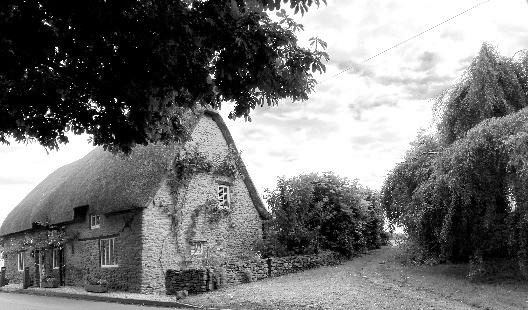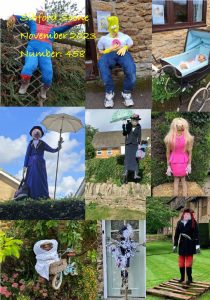 This stone and rubble, thatched cottage, photographed by Bernie Jones, stands at the east end of Main Street in Sibford Ferris and is known as Little London. This name is often given to the last property in a village on the road towards the capital city. Originally two separate cottages, the older part dates back to the 1500s. Some 100-200 years later the later built adjacent cottage on the village side was joined to provide a single dwelling. The area between was infilled to provide extra living and bedroom space plus a new internal bathroom. Previously bathing would have been a tin bath in front of the fire and a privy in the garden would have served toilet needs and provided night soil for the garden. The outdoor privy would have been used until mains water and sewerage arrived in the village in the mid 1900s.
This stone and rubble, thatched cottage, photographed by Bernie Jones, stands at the east end of Main Street in Sibford Ferris and is known as Little London. This name is often given to the last property in a village on the road towards the capital city. Originally two separate cottages, the older part dates back to the 1500s. Some 100-200 years later the later built adjacent cottage on the village side was joined to provide a single dwelling. The area between was infilled to provide extra living and bedroom space plus a new internal bathroom. Previously bathing would have been a tin bath in front of the fire and a privy in the garden would have served toilet needs and provided night soil for the garden. The outdoor privy would have been used until mains water and sewerage arrived in the village in the mid 1900s.
During restoration work carried out between 1998 and 2003, an Elizabethan silver sixpence, dated 1575, was found in the older part. It was common practice in the 16th century for the builder of a property to place a current coin of the realm in the house to bring luck to the new home. Similarly, a coin dated 1739 was found in the Inglenook fireplace in the newer cottage
In 1575 the land behind the cottage was an elm wood which may account for the elm boards that were found beneath the later added Victorian floorboards. During his restoration process Graeme Piercy sourced a felled elm tree, had it planked and transported from Grantham to Sibford to reinstate the elm floors. Further sympathetic improvements and an extension have been added since the major restoration process.
The inviting footpath alongside Little London leads to farmland which stretches behind the cottage. This land used to provide allotments for Ferris villagers until they were incorporated and used for crop planting. The footpath bisects the field diagonally and leads to Folly Farm and Grange Lane providing access towards Swalcliffe Grange.
Maureen Hicks

